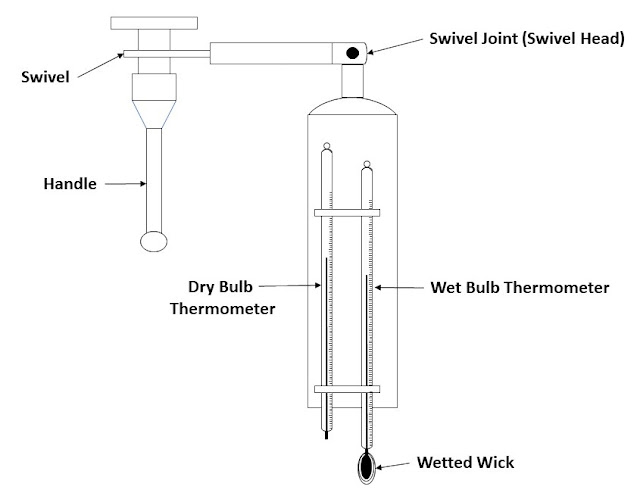Dry & wet bulb hygrometer. (Psychrometer)
Dry & wet bulb hygrometer. (Psychrometer)
When water or ice covers the bulb of a thermometer (wet-bulb), latent heat is removed from the surface of the bulb as the water evaporates, and the wet-bulb temperature becomes lower than the air (dry-bulb) temperature.
At a lower humidity, water evaporates more actively, so that the wet-bulb temperature lowers sharply.
The aspirated psychrometer measures humidity by measuring the difference between the dry-bulb temperature and wet-bulb temperature.
A psychrometer, or a wet and dry-bulb thermometer, consists of two calibrated thermometers, one that is dry and one that is kept moist with distilled water on a sock or wick.
At temperatures above the freezing point of water, evaporation of water from the wick lowers the temperature, such that the wet-bulb thermometer will be at a lower temperature than that of the dry-bulb thermometer.
When the air temperature is below freezing, however, the wet-bulb must be covered with a thin coating of ice, in order to be accurate.
As a result of the heat of sublimation, the wet-bulb temperature will eventually be lower than the dry bulb, although this may take many minutes of continued use of the psychrometer.
Wet and dry bulb psychrometers are the most simple and common way of measuring humidity.
This type of hygrometer uses two basic mercury thermometers, one with a wet bulb one with a dry bulb.
Evaporation from the water on the wet bulb causes its temperature reading to drop, causing it to show a lower temperature than the dry bulb.
Relative humidity is calculated by comparing the readings using a calculation table that compares the ambient temperature (the temperature given by the dry bulb) to the difference in temperatures between the two thermometers.

Comments
Post a Comment